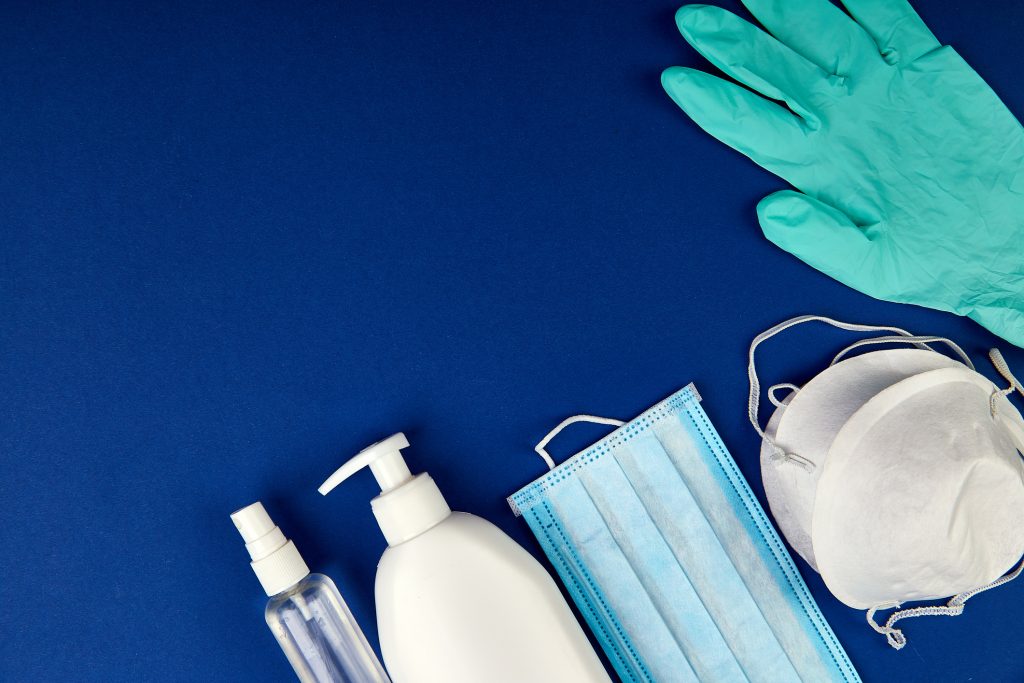A guide to PPE for an independent practice

As an independent physician, you are probably requiring your patients and your staff to wear masks or other face coverings in your practice. The Centers for Disease Control and Prevention (CDC) has recommended that everyone wear masks to help prevent the spread of COVID-19 during the pandemic. You and your staff will be further protected by taking advantage of available personal protective equipment (PPE).
PPE refers to the protective clothing, gloves, face shield, goggles, face masks, or other equipment you may use that is designed to protect you from the spread of infection. While PPE is commonly used in healthcare setting such as hospitals and laboratories, donning PPE for every patient visit throughout the day may be a new experience, one of many during COVID-19.
However, when used properly, PPE acts as a barrier between infectious materials such as viral and bacterial contaminants and your skin, mouth, nose, or eyes (mucous membranes). The barrier has the potential to block transmission of contaminants from blood, body fluids, or respiratory secretions.
The CDC offers a number of recommendations regarding PPE for an independent practice. The organization suggests that you consider three key things:
- The type of your anticipated exposure. This is determined by the type of anticipated exposure, such as touch, splashes or sprays, or large volumes of blood or body fluids that might penetrate the clothing.
- Linked to the first recommendation is the durability and appropriateness of the PPE for the task. This will affect, for example, whether a gown or apron is selected for PPE, or, if a gown is selected, whether it needs to be fluid resistant, fluid proof, or neither.
- Fit. PPE must fit the individual user, and it is up to you to ensure that all PPE are available in sizes appropriate for your staff members who must be protected.
The CDC has also provided a guide on using PPE that will be helpful for you and your independent practice:
- Donning PPE. One example of properly putting on your PPE is to:
- Identify and gather the proper PPE to don. Ensure choice of gown size is correct (based on training).
- Perform hand hygiene using hand sanitizer.
- Put on isolation gown. Tie all of the ties on the gown. Assistance may be needed by other healthcare personnel.
- Put on NIOSH-approved N95 filtering facepiece respirator or higher (use a facemask if a respirator is not available). If the respirator has a nosepiece, it should be fitted to the nose with both hands, not bent or tented. Do not pinch the nosepiece with one hand. Respirator/facemask should be extended under chin. Both your mouth and nose should be protected. Do not wear respirator/facemask under your chin or store in scrubs pocket between patients.
- Put on face shield or goggles. When wearing an N95 respirator or half facepiece elastomeric respirator, select the proper eye protection to ensure that the respirator does not interfere with the correct positioning of the eye protection, and the eye protection does not affect the fit or seal of the respirator. Face shields provide full face coverage. Goggles also provide excellent protection for eyes, but fogging is common.
- Put on gloves. Gloves should cover the cuff (wrist) of gown.
- Healthcare personnel may now enter patient room.
- Doffing PPE. One example of properly taking off your PPE is to:
- Remove gloves. Ensure glove removal does not cause additional contamination of hands.
- Remove gown. Untie all ties (or unsnap all buttons). Some gown ties can be broken rather than untied. Do so in a gentle manner, avoiding a forceful movement. Reach up to the shoulders and carefully pull gown down and away from the body. Rolling the gown down is an acceptable approach. Dispose in trash receptacle.
- Healthcare personnel may now exit patient room.
- Perform hand hygiene.
- Remove face shield or goggles. Carefully remove face shield or goggles by grabbing the strap and pulling upwards and away from head. Do not touch the front of face shield or goggles.
- Remove and discard respirator (or facemask if used instead of respirator). Do not touch the front of the respirator or facemask.
- Perform hand hygiene after removing the respirator/facemask and before putting it on again if your workplace is practicing reuse.
The US Food & Drug Administration (FDA) advises that all personal protective equipment (PPE) that is intended for use as a medical device must follow the FDA’s regulations and should meet applicable voluntary consensus standards for protection. This includes surgical masks, N95 respirators, medical gloves, and gowns. When these standards and regulations are followed, they provide reasonable assurance that the device is safe and effective.






